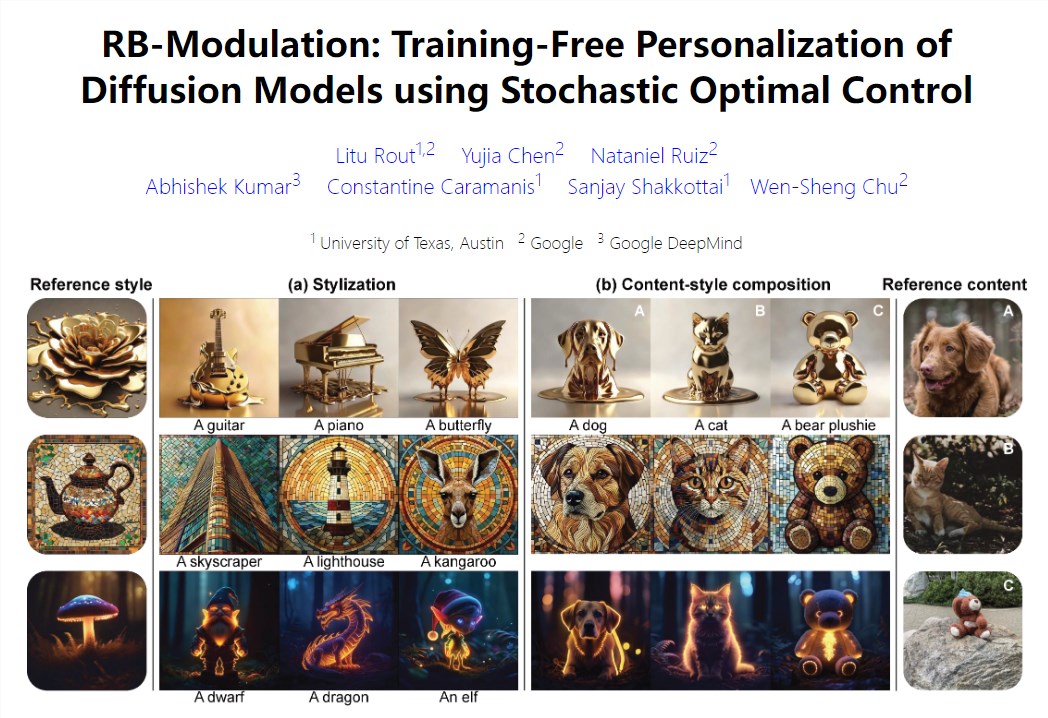Google has recently open-sourced a new style transfer model called RB-Modulation, which has garnered widespread attention in the field of AI image processing due to its technological breakthroughs. Preliminary demonstrations show that RB-Modulation not only excels in image style conversion but also achieves significant advancements in several key technical indicators.

Key Features
- Training-free Personalization: Allows for personalized control of style and content without the need for additional training.
- High Fidelity: Ensures that generated images are faithful to the reference style, preventing information leakage.
- Robust Style Descriptive Capabilities: Extracts and encodes the required image attributes through style descriptors.
- Strong Adaptability: Can handle various input prompts and generate diverse images flexibly.

The core advantage of RB-Modulation lies in its "training-free" nature. This means users can achieve high-quality personalized image style customization without additional model training. The model also directly supports mainstream image generation models like SDXL and FLUX, significantly enhancing its practicality and compatibility.
Technically, RB-Modulation introduces an innovative Attention Feature Aggregation (AFA) module. This module cleverly addresses the issue of style leakage, ensuring that the text attention map is not contaminated by the style attention map, thus maintaining the purity of the style and the integrity of the content in the generated images. Additionally, the model excels in inference efficiency, providing strong support for practical applications.
RB-Modulation's strengths also include its powerful style descriptive capabilities. Through precise style descriptor extraction and encoding, the model can accurately capture and reproduce the required image attributes. Moreover, its flexible adaptability allows it to handle diverse input prompts, generating rich and varied image content.
In terms of user experience, RB-Modulation shows significant improvements over existing methods. The model not only efficiently decouples content and style but also performs excellently in user preference metrics. The Google team has also provided a theoretical link between optimized control and reverse diffusion dynamics, offering a solid theoretical foundation for the model's effectiveness.
The application prospects of RB-Modulation are vast. In the field of art creation, it can help artists quickly transform image styles, creating unique works. For advertising designers, RB-Modulation offers a convenient tool to integrate brand content with specific artistic styles, aiding in the production of more attractive advertising materials. In game development, developers can use this technology to adjust the artistic style of game characters or scenes, enhancing the visual experience of the game.
Live Demo: https://huggingface.co/spaces/fffiloni/RB-Modulation
Project Page: https://top.aibase.com/tool/rb-modulation
